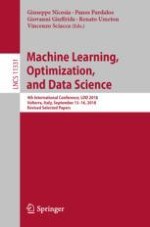
2019 | OriginalPaper | Buchkapitel
Calibrating the Classifier: Siamese Neural Network Architecture for End-to-End Arousal Recognition from ECG
verfasst von : Andrea Patanè, Marta Kwiatkowska
Erschienen in: Machine Learning, Optimization, and Data Science
Aktivieren Sie unsere intelligente Suche, um passende Fachinhalte oder Patente zu finden.
Wählen Sie Textabschnitte aus um mit Künstlicher Intelligenz passenden Patente zu finden. powered by
Markieren Sie Textabschnitte, um KI-gestützt weitere passende Inhalte zu finden. powered by